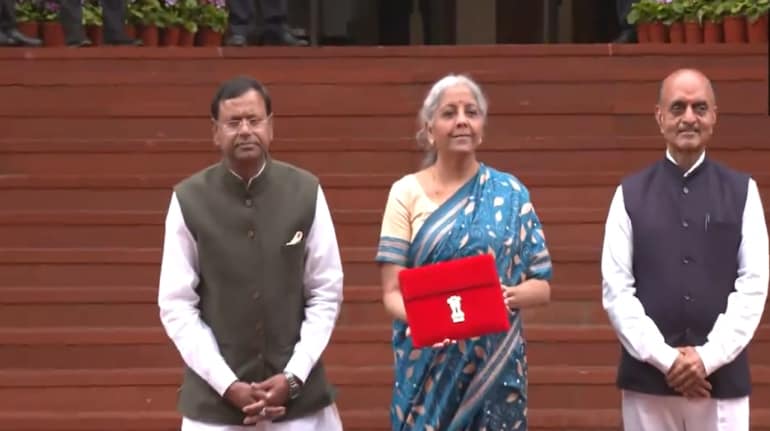
Paytm, formally known as One97 Communications Ltd., has signed up BlackRock, the world’s largest asset manager, and CPPIB together with the sovereign wealth funds of Singapore and Abu Dhabi as anchor investors for next week’s 183 billion rupee ($2.46 billion) IPO. The $1.1 billion sale to cornerstone investors saw more than 10 times as much demand as shares on offer, according to Bloomberg News.
The Indian online-payment pioneer had tremendous novelty value five years ago. When Prime Minister Narendra Modi suddenly immobilized 86% of the country’s currency in November 2016 in a failed bid to freeze out ill-gotten cash, the fledgling app, whose name is shorthand for “pay through mobile," won millions of new customers overnight. Founder Vijay Shekhar Sharma couldn’t hide his glee. Warren Buffett’s Berkshire Hathaway Inc. joined Masayoshi Son's SoftBank Group Corp. and Alibaba Group Holding Ltd. as investors in the startup.
That was then. India’s technology landscape has evolved so rapidly since 2016 that most businesses nowadays pay next to nothing for receiving customer payments over smartphones. And the pricing pressure isn’t going to ease, except that merchants will want to pay less even for add-on services, such as reconciling accounts and handling returns and refunds.
Back when it didn’t have today’s 57 million unique monthly users,(2)Paytm incurred 162 rupees in direct costs — not counting overheads like salaries and brand-building — to garner 100 rupees of revenue. Of that, 70 rupees went toward processing payments and another 86 rupees were spent on cash-backs and other enticements. “You cannot have a business that says, ‘Pay a 500 rupees bill and take 250 rupees cash-back,’'' Aditya Puri, the then-chief executive of HDFC Bank Ltd., India’s largest lender by market value, said in 2017, adding that e-wallets have no future.
In its most recent quarter, however, Paytm ended up with a 27 rupees surplus on the same 100 rupees revenue. Thanks to additional overheads, it’s not yet a profit — but it’s getting closer. HDFC Bank is now a partner of Paytm.
The economics are improving, even though phone wallets have become a commodity. The underlying technology, which Paytm uses to compete against Alphabet Inc.’s Google Pay and Walmart Inc.’s PhonePe, is a shared utility anyone can commercialize. So while Paytm handles the equivalent of nearly $80 billion of payments annually to 22 million merchants, its “take rate" for translating transactions to revenue is just 0.6%.
But it’s this very competitive nature of the payments game that encourages more merchants in small cities and towns to accept cashless instruments, bypassing expensive cards and contactless systems like PayPal Holdings Inc., which has left the Indian domestic scene entirely.
The anchor investor interest in the Paytm IPO is the biggest validation yet of the Indian model of digitization: From payments to health care, an open-markets protocol — running on top of a public utility — can be a viable alternative to proprietary platforms and predatory pricing. What a firm might lose in take rates on individual transactions is more than made up by the gains from handling billions of them.
A low-margin, high-volume business can create its own data moat. Since most of India’s retailers are too small and too informal to otherwise be able to access credit, digital payments act as valuable — and often the only — informational collateral. The money-making opportunity is in extending credit to mom-and-pop stores, based on their digital cash-flow trail. As Paytm founder Sharma told BloombergQuint, “India's GDP will not grow because payments are digital, but because payments being digital have enabled lenders to give credit."
To see why he may be right, consider the behavior of the firm’s current and future rivals.
Unity Small Finance Bank, a brand-new, digital-first institution, arose this week from the ashes of a scam-tainted cooperative lender, with BharatPe, another payments fintech like Paytm, as one of its two equal owners. This might be a predictable diversification: The wafer-thin margins on which small retailers in emerging markets like India operate can’t sustain a pure-play payments business such as Visa Inc. or PayPal. There’s little to be gained from giving shopkeepers QR codes to receive funds if you can’t also lend them money.
But then, consider the opposite maneuver. Bajaj Finance Ltd., India’s top consumer lender, said in an investor presentation that it has signed up more than 3 million customers for its wallet. It’s now applying for a payment aggregator license that will enable customers to settle merchants’ bills without requiring mediation by a third-party app. If the whole purpose of getting into payments is to lend, why would a profitable financier want to enter a potentially money-losing business?
Chalk it up to the fear of getting outflanked by BharatPe and Paytm. BharatPe co-owns a bank. Paytm is stuck with a 49% stake in a so-called payments bank, which isn’t allowed to lend and can only accept deposits below a certain level.
The next step for Paytm and its payments bank is to amalgamate into a full-fledged, unrestricted lender, credit-card issuer and deposit taker, and flex its own balance sheet like the digital-only KakaoBank Corp. in South Korea. That’s where the pot of gold lies, and BlackRock may have figured it out better than analysts moaning over transactions not translating into revenue. That’s a feature, not a bug.
(1) Paytm has 337 million registered consumers.
Andy Mukherjee is a Bloomberg Opinion columnist covering industrial companies and financial services. He previously was a columnist for Reuters Breakingviews. He has also worked for the Straits Times, ET NOW and Bloomberg News.
This story has been published from a wire agency feed without modifications to the text. Only the headline has been changed.
Never miss a story! Stay connected and informed with Mint. Download our App Now!!
Where world’s largest asset manager sees value in Paytm IPO - Mint
Read More

No comments:
Post a Comment